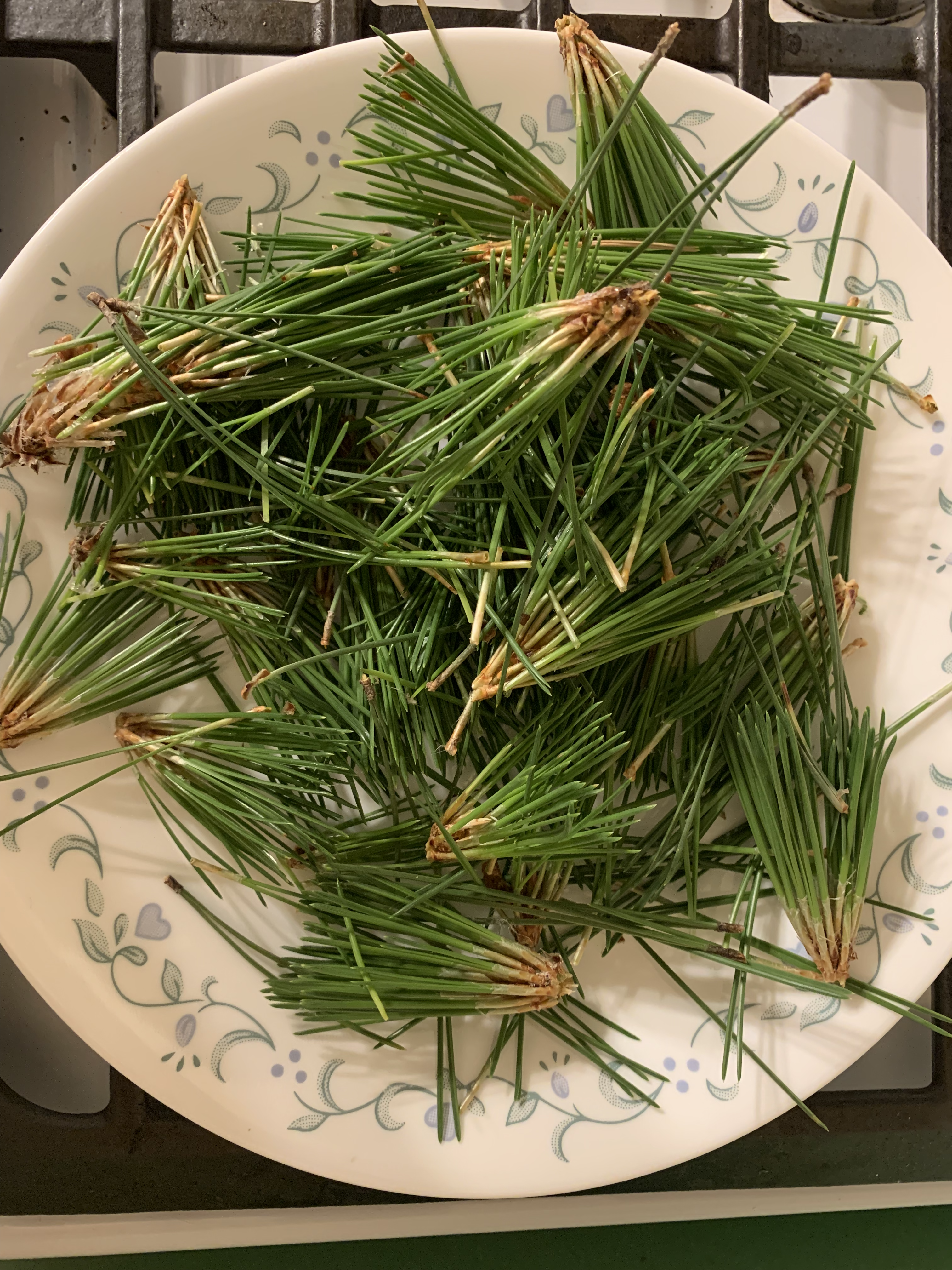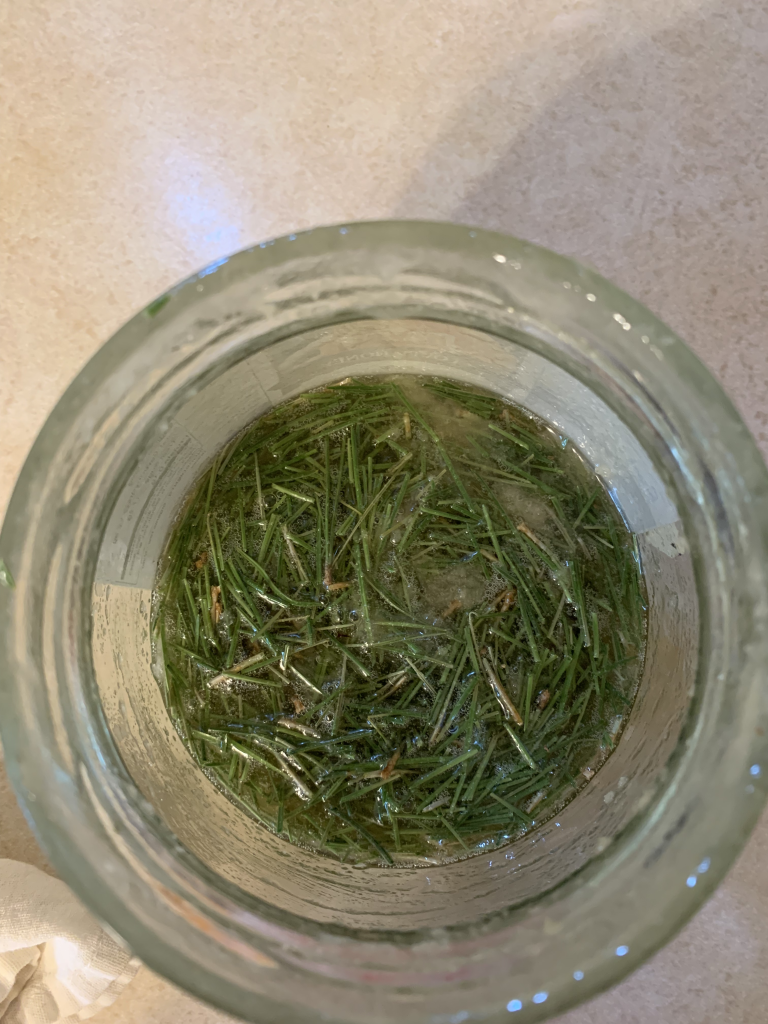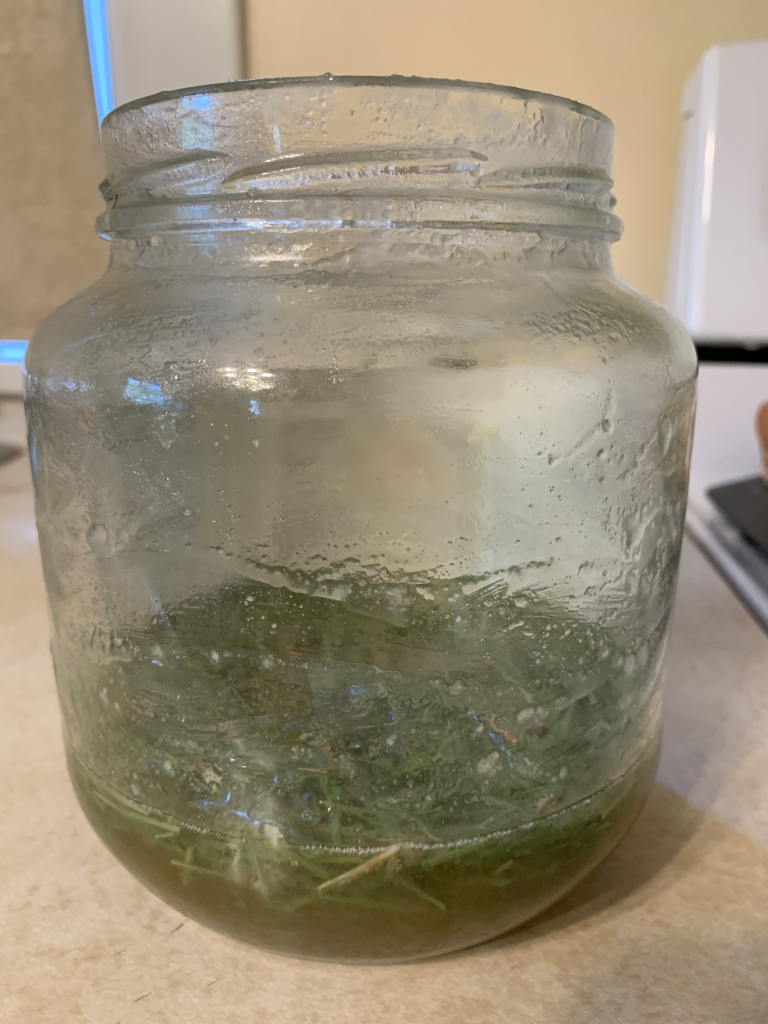Your cart is currently empty!

Creating Medicinal Pine Needle Honey
Did you know you can make a medicinal honey by macerating (soaking) pine needles in raw honey? You sure can! This delightful preparation not only offers a unique flavor but also concentrates the health benefits of both pine and honey into a simple, powerful remedy. This is known as Pine Needle Honey.
Foraging for Pine Needles
To start, you’ll need to forage for pine needle tips. When foraging, it’s essential to practice herbal etiquette: do not take all there is! Instead, harvest from many trees to ensure no one tree is over harvested. Look for young, tender needles, as they are the most flavorful and beneficial.
Once you’ve gathered your pine needles, head indoors. Snip them into smaller pieces to help release their essential oils and nutrients. Place the chopped needles into a clear glass jar, ensuring there’s enough room for the honey.

Botanical Cautions
Before harvesting, be sure you’ve correctly identified a true pine tree. Safe pine species belong to the genus Pinus in the Pinaceae family. Common, well-known options include:
Eastern White Pine (Pinus strobus)
Red Pine (Pinus resinosa)
Ponderosa Pine (Pinus ponderosa) — use in small amounts
Regardless of which Pine you choose, avoid internal use during pregnancy or nursing.
If you are uncertain, search for clear identification photos of White Pine, Red Pine or even spruce trees (Picea spp.), which can be used similarly. Spruce shares many aromatic and respiratory-supportive benefits and is often easier to find in some regions.
Avoid the following look-alikes, which are not true pines and may be toxic:
Yew (Taxus spp.): Not a pine. This plant belongs to the Taxaceae family and contains toxic alkaloids that can be dangerous even in small amounts.
Norfolk Island “Pine” (Araucaria heterophylla): Despite its name, this is not a pine at all. It belongs to the Araucariaceae family. Do not use it.
If you’re unsure about your tree, consult a trusted plant identification guide, an extension office or an experienced local forager.
As always, forage respectfully: harvest only what you need, clip young growth from multiple trees. Be grateful for your free medicine source.
Preparing the Infusion
Next, pour raw honey over the pine needles until they are just covered. Gently push down the needles and stir the mixture a bit to ensure they are well incorporated. It’s important to wipe off any honey that may have dripped onto the outside of the jar to prevent it from becoming sticky.
Seal the jar tightly with a lid, and don’t forget to label it with the contents and the date you started the infusion. This labeling is very important, as it helps you keep track of what you have and when it was made.
Now, place the jar outdoors to soak up the heat of summer. The warmth will help extract the beneficial properties from the pine needles. You can let the mixture sit for as little as 2 weeks if you need it sooner, but ideally, allow it to infuse for 4-6 weeks during warm summer weather. It’s best to bring the jar indoors for straining just before the nights begin to cool, as you want to avoid condensation forming inside the macerating jar.
If letting the honey set outdoors will not work, the jar can be set indoors to do the macerating (soaking) for the allotted time. So, do this to avoid condensation inside the jar, if the evenings will be getting too cool.


Straining and Storing
As summer comes to an end, it’s time to bring your infused honey indoors. Straining the honey can sometimes be challenging, especially if it has crystallized. Avoid using the microwave! Instead, heat a slow cooker on low until it reaches about 120 degrees Fahrenheit. Turn it off, remove the lid, and place your jar of Pine Honey in the crockpot. This gentle heat will soften the crystallized honey, making it easier to strain. Use a layer of cheesecloth above a fine mesh strainer. This combination will help catch any small particles while allowing the honey to flow through smoothly. Let it strain into a glass jar or measuring pitcher.
After straining, store the Pine Needle Honey in a glass jar kept out of direct light to preserve its flavor and health benefits. Proper storage is crucial to maintaining the quality of your infusion.
Health Benefits of Pine Needle Honey
Pine Needle Honey is not just a delicious treat; it also boasts a variety of health benefits that have been recognized for generations. Here are some of the key advantages of incorporating this unique honey into your diet:
Rich in Antioxidants: Pine Needle Honey is packed with antioxidants, which help combat oxidative stress in the body. Antioxidants play a crucial role in neutralizing free radicals, potentially reducing the risk of chronic diseases and promoting overall health.
Respiratory Health: The infusion of pine needles in honey has been traditionally used to support respiratory health. Pine needles contain compounds that may help soothe coughs, reduce mucus, and alleviate symptoms of bronchitis. The honey acts as a natural expectorant, making it easier to expel phlegm and clear the airways.
Anti-Inflammatory Properties: Both pine needles and honey have anti-inflammatory properties. This combination can help reduce inflammation in the body, which is beneficial for conditions such as arthritis, sore throats, and other inflammatory ailments.
Immune System Support: Pine Needle Honey is believed to boost the immune system. The vitamins, minerals, and antioxidants present in this honey can enhance the body’s natural defenses, making it more resilient against infections and illnesses.
Natural Energy Booster: The natural sugars in Pine Needle Honey provide a quick source of energy, making it an excellent choice for athletes or anyone needing a pick-me-up. It can be taken before or after workouts to replenish energy levels.
Skin Health: Pine Needle Honey can also be beneficial for skin health. Its antibacterial and anti-inflammatory properties make it a great addition to skincare routines. It can be used in face masks or applied to minor cuts and burns to promote healing.
Soothing for Coughs and Sore Throats: The combination of honey and pine needles creates a soothing remedy for coughs and sore throats. The honey coats the throat, providing relief from irritation, while the pine needles offer additional respiratory benefits.
Nutrient-Rich: Pine Needle Honey contains a variety of essential nutrients, including:
Vitamin A: Important for vision, immune function, and skin health.
Vitamin C: Powerful antioxidant that supports the immune system and skin health.
Calcium: Essential for bone health and muscle function.
Magnesium: Important for muscle and nerve function, as well as energy production.
Potassium: Helps regulate fluid balance, muscle contractions, and nerve signals.
Traditional Uses: Historically, pine needles have been used in herbal medicine for their health benefits. Indigenous cultures and herbalists have utilized pine for its antiseptic, antibacterial, and antifungal properties, making Pine Needle Honey a valuable addition to natural remedies.
How to Use Pine Needle Honey
To reap the health benefits of Pine Needle Honey, consider adding it to your daily routine. Here are a few suggestions:
Stir it into your morning tea or herbal infusions: This not only sweetens your drink but also enhances its health benefits.
Use it as a natural sweetener in smoothies or yogurt: This adds a unique flavor and boosts the nutritional value of your meals.
Incorporate it into homemade cough syrups or throat lozenges: The soothing properties of the honey can help alleviate symptoms during cold and flu season.
Apply it topically to minor skin irritations or as part of a face mask: Its antibacterial and anti-inflammatory properties can promote healing and improve skin health.
Review; Pine Needle Honey at a Glance
Ingredients: Young pine needle tips, raw honey
Prep: Chop needles, cover in honey, stir & label jar
Infuse: 2–6 weeks in warm sun
Strain: Gently warm to ~120°F, use cheesecloth over fine strainer
Store: In cool, dark place in a glass jar
Use: In tea, on skin, in syrups or straight off the spoon
Conclusion: A Sweet and Healing Tradition
Pine Needle Honey is a remarkable blend of flavor and health benefits, making it a valuable addition to your pantry. From its antioxidant properties to its ability to support respiratory health, this unique honey offers a variety of uses that can enhance your well-being.
As you explore the world of herbal remedies, remember to forage responsibly and appreciate the gifts of nature. With just a few simple steps, you can create your own Pleasantly Pine Needle Honey and enjoy its delightful taste and numerous health benefits.
And here’s a fun fact to leave you with: Did you know that a honeybee only makes about 1 teaspoon of honey in her lifetime? This makes it all the more special to use every last drop of your Pleasantly Pine Needle Honey!
See our other how to articles.
© 2025 Kellie (Kalili) Haszard. Published by Growing Traditions. All Rights Reserved. This article is intended for educational use only. Reproduction or redistribution of this material in whole or in part is not permitted without prior written permission from the author. Sharing via direct links is welcome, provided full credit is given to Growing Traditions with a clear link to the original content at www.growingtraditions.org. Thank you for respecting the time and care that went into creating this work.
